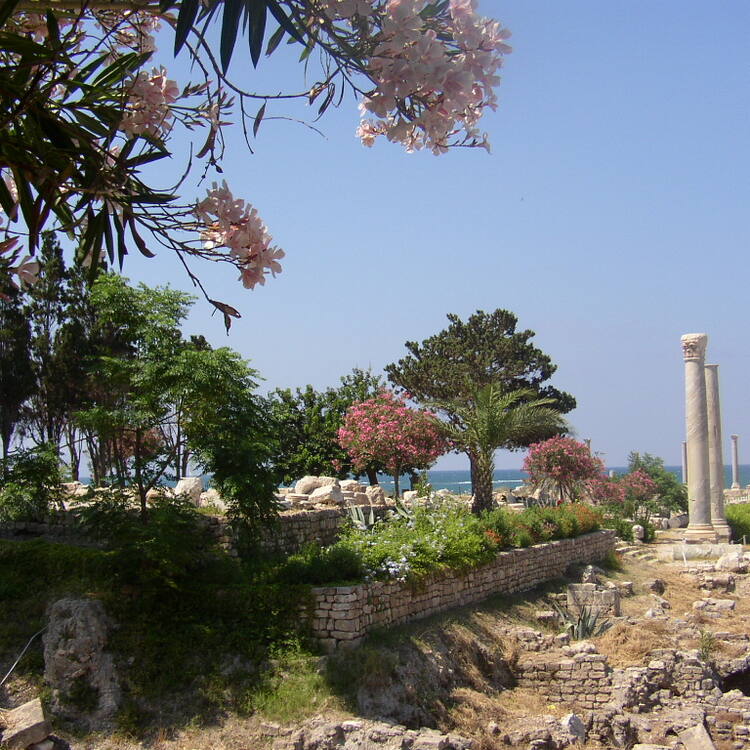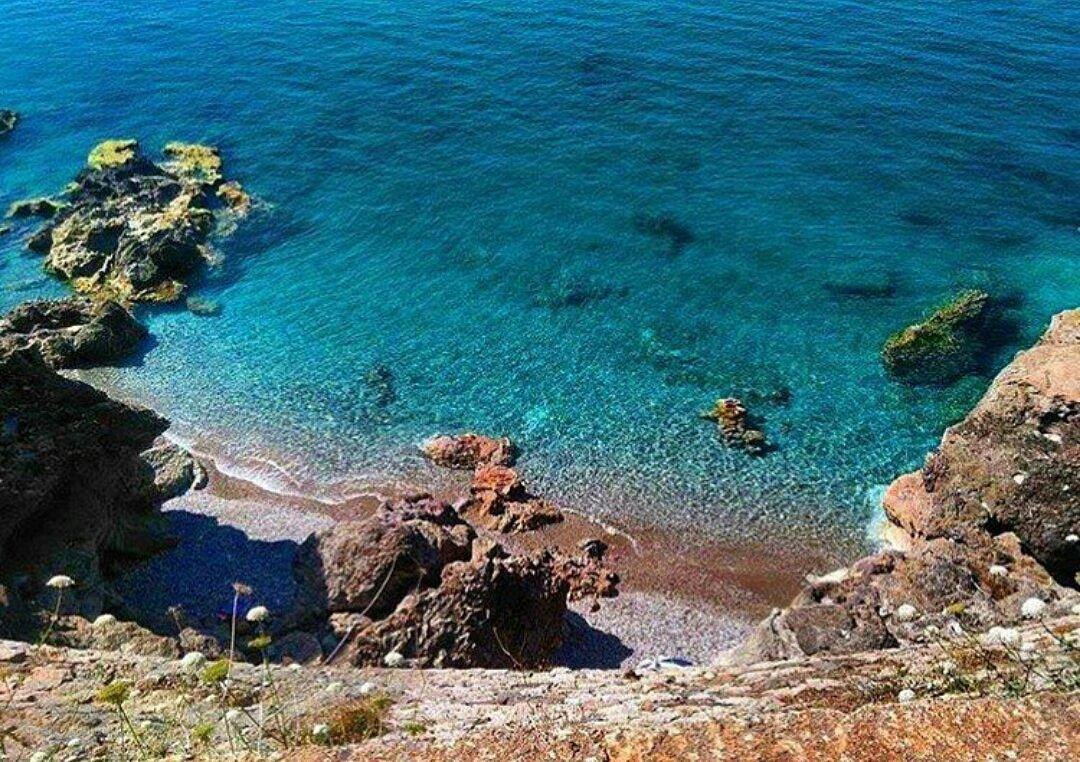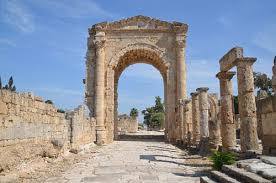Tyre
According to legend, purple dye was invented in Tyre. This great Phoenician city ruled the seas and founded prosperous colonies such as Cadiz and Carthage, but its historical role declined at the end of the Crusades. There are important archaeological remains, mainly from Roman times.

Outstanding Universal Value
Brief synthesisLocated on the southern coast of Lebanon, 83 km south of Beirut, the antique town of Tyre was the great Phoenician city that reigned over the seas and founded prosperous colonies such as Cadiz and Carthage and according to legend, was the place of the discovery of purple pigment.From the 5th century B.C., when Herodotus of Halicarnassus visited Tyre, it was built for the most part on an island reportedly impregnable, considered one of the oldest metropolises of the world, and according to tradition founded in 2750 B.C. Tyre succumbed to the attack of Alexander of Macedonia who had blocked the straits by a dike. First a Greek city, and then a Roman city were constructed on this site, which is now a promontory.Tyre was directly associated with several stages in the history of humanity, including the production of purple pigment reserved for royalty and nobility, the construction in Jerusalem of the Temple of Solomon, thanks to the material and architect sent by the King Hiram of Tyre; and the exploration of the seas by hardy navigators who founded prosperous trading centres as far away as the western Mediterranean, that ultimately assured a quasi-monopoly of the important maritime commerce for the Phoenician city.
The historic role of Tyre declined at the end of the period of the Crusades.In the modern town of Soûr, the property consists of two distinct sites: the one of the town, on the headland, and the one of the Necropolis of El Bass, on the continent. The site of the town comprises important archaeological vestiges, a great part of which is submerged. The most noteworthy structures are the vestiges of the Roman baths, the two palaestrae, the arena, the Roman colonnaded road, the residential quarter, as well as the remains of the cathedral built in 1127 by the Venetians and some of the walls of the ancient Crusader castle. The sector of Tyre El Bass, constituting the principal entrance of the town in antique times, comprises the remains of the necropolis, on either side of a wide monumental causeway dominated by a Roman triumphal arch dating from the 2nd century AD. Among the other vestiges are an aqueduct and the hippodrome of the 2nd century, one of the largest of the Roman world.

Criterion (iii): Metropolis of Phoenicia in past times, sung about for its great beauty, Tyre rapidly became the most important centre for maritime and land commerce in the eastern Mediterranean. The Phoenician remains reflect the power, influence and wealth of the merchants of Tyre who navigated the Mediterranean waters and filled their warehouses with goods from their extensive colonies all around the Mediterranean coasts.
Criterion (vi): Tyre is associated with the important stages of humanity. Astute navigators and merchants, the Phoenicians were reputed to have given birth to the great figures of mythology including Cadmos, credited for the introduction of the alphabet to Greece and his sister, Europe, who gave her name to the European continent.
IntegrityAs the exact boundaries of the site have not yet been formally approved, it must be assumed that the zones protected by the national legislation, as documented by the town plan, are assimilated into the inscribed property and include the essential attributes of the Outstanding Universal Value of the property. However, the physical vestiges of the aqueduct and some areas of the ancient necropolis, not cleared and still buried, located outside the protected area, are also attributes of the Outstanding Universal Value. As the overall archaeological prospection is incomplete, the full extent of the potential elements is not definite.During the period of civil war (1975-1991), the urban development of Tyre progressed uncontrolled by the authorities and consequently numerous tower constructions were built in the immediate vicinity of the property. The integrity of the property is still threatened by urban sprawl and building speculation.
AuthenticityThe key attributes of the property – the imposing ruins from the Roman city and the mediaeval construction of the Crusades on the former island, and on the mainland the necropolis, monumental way, aqueduct and hippodrome - reflect the former glory of Tyre. They are however highly vulnerable to lack of conservation and to development pressures that could weaken their ability to convey fully the significance of Tyre as powerful port city.

Protection and management requirements (2009)The property is protected by the Antiquities Law No. 166/1933, and the Law on Protection of Cultural Property, No 37/2008. The conservation and management of the property is assured by the Directorate General of Antiquities (DGA). A Protection and Enhancement Plan is being prepared. The goal of this project is to ensure an improved presentation of the unique vestiges and to develop a new system for protection of the property that respects the international charters. A master plan for the town is already approved. It aims to provide maximum protection to the area surrounding the property and counter the phenomenon of urban sprawl that seriously affects the listed archaeological zone. The DGA controls all the construction and restoration permits. The Cultural Heritage and Urban Development project (CHUD) financed by the World Bank covers a large part of the measures necessary for the protection and management of the property.Conditions for the safeguarding of the property are the definition of the non aedificandi zones of land belonging to the State and the ban on the construction of buildings of more than three storeys in the immediate vicinity of the protected monumental vestiges.


